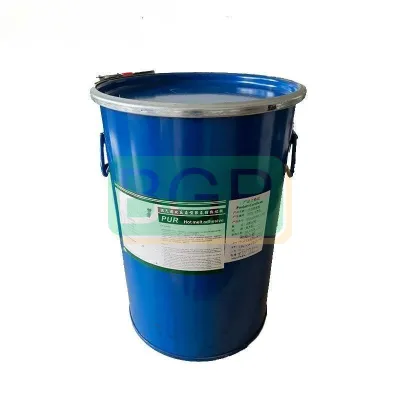Comparing PUR Hot Melt Adhesive to Other Adhesive Types: A Comprehensive Review
In the world of adhesives, there are numerous options available, each catering to specific needs and industries. One such adhesive that has gained prominence in recent years is Polyurethane Reactive (PUR) hot melt adhesive. In this article, we will perform a thorough comparison between PUR hot melt adhesive and other adhesive types, shedding light on their unique characteristics and applications.
What is PUR Hot Melt Adhesive?
Polyurethane Reactive (PUR) hot melt adhesive is a versatile and highly efficient adhesive that is widely used in various industries. It is formulated by combining polyurethane polymers with additives and then heating the mixture to make it adhesive when applied.
Key Characteristics of PUR Hot Melt Adhesive
High Bond Strength: PUR hot melt adhesive offers exceptional bond strength, making it ideal for applications that require a durable and long-lasting adhesive.
Flexibility: This adhesive type retains its flexibility even after bonding, making it suitable for applications where materials may expand or contract.
Fast Curing: PUR hot melt adhesive cures rapidly, reducing production time and increasing efficiency.
Resistance to Moisture: It is highly resistant to moisture, ensuring the adhesive bond remains intact even in humid conditions.
Versatility: PUR hot melt adhesive adheres well to a wide range of substrates, including plastics, metals, wood, and more.
Comparative Analysis
Now, let's compare PUR hot melt adhesive to other adhesive types commonly used in various industries.
1. PUR Hot Melt Adhesive vs. Epoxy Adhesive
Bonding Strength: While both PUR and epoxy adhesives offer strong bonds, PUR adhesive excels in flexibility, which epoxy may lack.
Curing Time: PUR hot melt adhesive cures faster than epoxy, improving production efficiency.
Resistance to Moisture: PUR adhesive is moisture-resistant, whereas epoxy may weaken in the presence of moisture.
2. PUR Hot Melt Adhesive vs. Cyanoacrylate Adhesive (Super Glue)
Bonding Strength: Cyanoacrylate adhesive provides strong bonds, but PUR adhesive's flexibility is an advantage in applications that require some material give.
Curing Time: Cyanoacrylate adhesive cures quickly, but PUR adhesive is known for its rapid curing.
Substrate Compatibility: PUR hot melt adhesive offers better adhesion to a wider variety of substrates.
3. PUR Hot Melt Adhesive vs. Pressure-Sensitive Adhesive
Bonding Strength: PUR adhesive provides a stronger, more durable bond compared to pressure-sensitive adhesive.
Curing Time: PUR adhesive cures quickly, whereas pressure-sensitive adhesive does not require curing time.
Versatility: PUR adhesive is more versatile in terms of the range of materials it can bond to.
Conclusion
In the world of adhesives, the choice between PUR hot melt adhesive and other adhesive types depends on the specific requirements of your application. PUR adhesive excels in terms of bonding strength, flexibility, and versatility, making it a top choice for many industries. However, the right adhesive for your needs will ultimately depend on the materials you are bonding, your production process, and the environmental conditions your products will face. It is advisable to consult with adhesive experts and conduct tests to determine the best fit for your unique situation.
By making an informed choice, you can ensure the success of your bonding applications and product durability. Remember, the right adhesive can make all the difference in the quality and performance of your products. More details please visit www.raywincoating.com




